 Clothing and light are just two of a cluster of symbols that are at play in the Catholic rites of initiation and of farewell.
Clothing and light are just two of a cluster of symbols that are at play in the Catholic rites of initiation and of farewell.
Let us begin with the BAPTISMAL GARMENT.
Coming forth from the font, the infant is clothed in a baptismal robe and the celebrant says: You have become a new creation and have clothed yourself in Christ. May this white garment be a sign to you of your Christian dignity. With your family and friends… bring it unstained into eternal life. (The Order of Baptism of Children, OBC 62)
To understand what the Church is offering us when we come for baptism we need to pay attention to the actions of the rites and the language and imagery in which they are couched. Liturgy is first theology, so we need, through reflection and education, to mine the meanings of words said and find meaning in the ritual actions.
We can see from the ritual text that the baptismal garment has a heavy load of meaning to carry. St Paul says, As many of you as were baptised into Christ have clothed yourselves with Christ (Gal.3:26). Julian of Norwich puts it this way, Christ is our clothing, who for love wraps us up, holds us close. This new creation – this baptised child – is wrapped up and held close to Christ and becomes with Christ a beloved of God. The baptismal garment is to be a life-long reminder of the dignity of being Christian as the person’s life unfolds in the company of family and friends.

We need to be mindful here that this lifetime between our baptism and our farewell to the world is time given to each of us for our journey into God. Baptism is not just a date on the calendar but rather a life-long journey of putting on Christ. We do not embark on this journey alone; we share it with others in learning to live gospel values. Our baptismal garment is to be worn into eternal life (in reasonable condition).
What sort of garment can carry this meaning? The baptismal garment is not only for the months of infancy. It is to be grown into; not grown out of. It is a unique garment that needs to carry meaning in infancy and childhood and then continue through to adulthood. It belongs to each person. It is not just a thing handed down through generations or passed from sibling to sibling. It needs to express noble simplicity; it needs to be honest and beautiful and muscular enough for life’s journey.
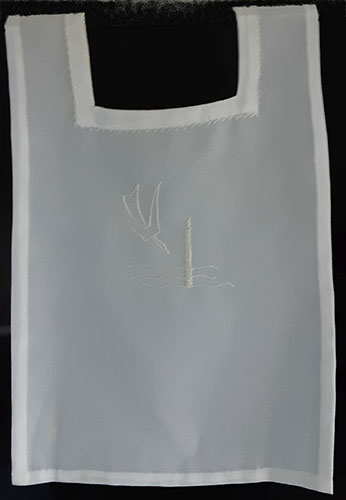
What would such a baptismal garment look like? In the Order of Baptism of Children there is an almost hidden note that says it is desirable that the family provide the garment (OBC 62). Our example has been hand-woven in white silk and cotton. It is a beautifully crafted piece made by Elizabeth Calnan (see elizabethcalnantextiles.com). It is neither mass produced nor sewn quickly from cheap fabric. It is a work of art worthy of the dignity of the sacrament. See how it can be worn again at Confirmation and first Communion. It can be used again at other sacramental celebrations or at the baptismal renewal that takes place each Easter. And finally it can figure at a person’s funeral.
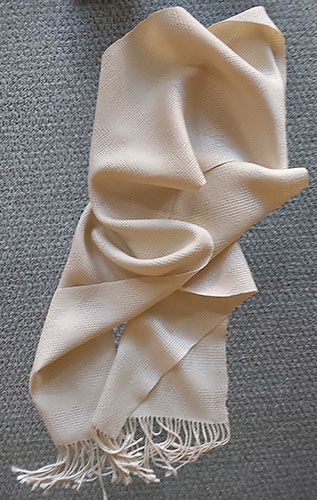
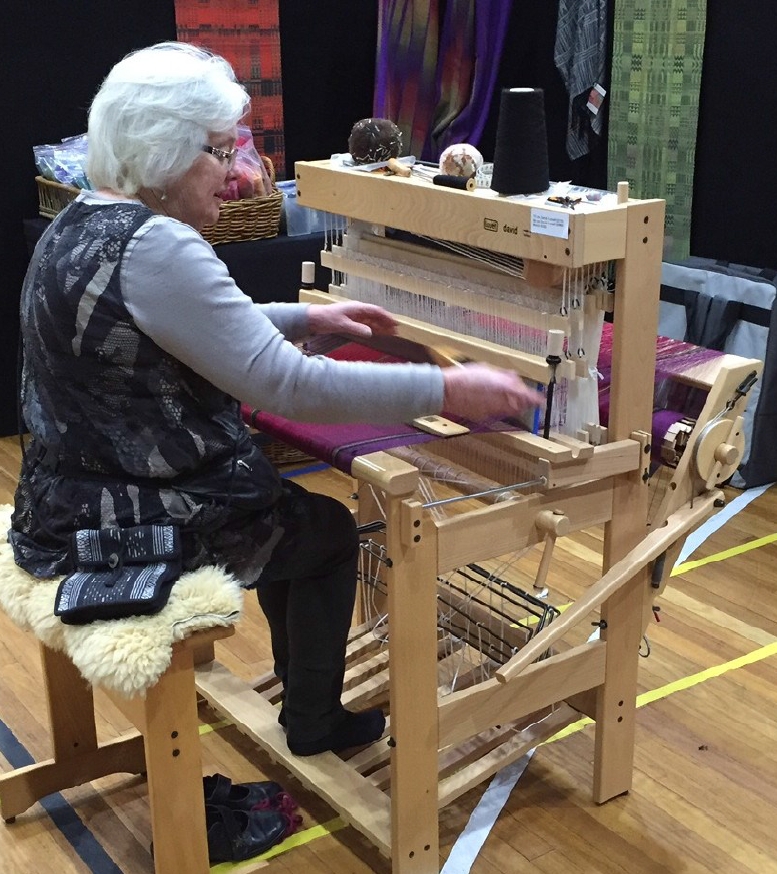
The cluster of symbols present at baptism return in the Order of Christian Funerals. On the death of a Christian, life in Christ comes full circle. Having been baptised into the life, death and resurrection of Christ, after the faithful Christian has made the lifelong journey of growing in conformity to Christ, the Church bids farewell. For the most part the life journey is undramatic; it is about the daily dying in ordinary events. It is a lifetime of small choices and of some radical decisions. In death, the life begun in baptism is complete. The mystery of God is now fully revealed. So at the funeral, tenderly, the pall signifying the baptismal garment is placed over the coffin. Again, this beloved of God is wrapped and held close by Christ who is our clothing. Inside the coffin, the body of the deceased lies wrapped in the baptismal garment.

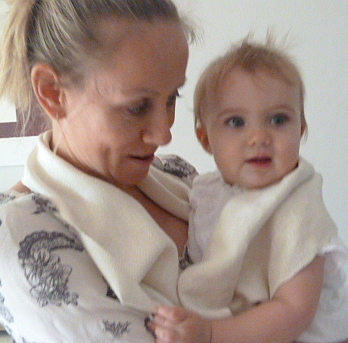

Why a LIGHTED CANDLE?

Near the baptismal font the Easter candle stands burning. The celebrant says to the newly baptised: Receive the light of Christ. The parent or god-parent comes forward and lights the child’s candle from the Easter candle. The following words are said: Parents and godparents, this light is entrusted to you to be kept burning brightly so that your child, enlightened by Christ, may always walk as a child of the light and, persevering in the faith, may run to meet the Lord when he comes with all the saints in the heavenly court. (OBC 63)
Once again, a substantial hand-made candle will be worthy of the occasion and see the Christian through the rest of this life. It will be carried again at Confirmation and first Communion. A beautifully crafted candle bearing the person’s name will be worthy of its significance in the ritual action. The baptismal prayer acknowledges the whole of life and the end of life, the moment when at last the baptised is escorted by the angels and saints to where Christ has gone.
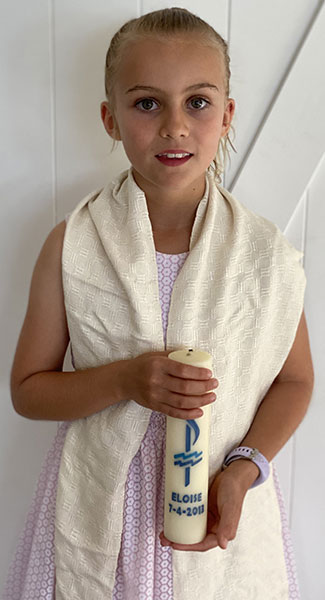
At a Christian funeral, the coffin is carried into the church and placed by the paschal candle, the symbol of Christ in our midst. The flame of the light of Christ guides our way on life’s journey. How wonderful if there is a place for the person’s baptismal candle in the rite! This would be much more significant than the personal items often placed on a coffin.
Pope Francis tells us, ‘To know the date of your baptism is to know a most blessed day.’ Parents can help a child remember and celebrate the day, perhaps with a meal. The parents might retell the story of the child’s baptism. Thus it becomes a special annual commemoration. The garment and candle help us in our baptismal remembrance, concrete symbols of the dignity that is ours as the baptised of God.
Jill O’Brien sgs has spent a lifetime working in liturgy and liturgical formation, with a special interest in liturgical art and architecture.
